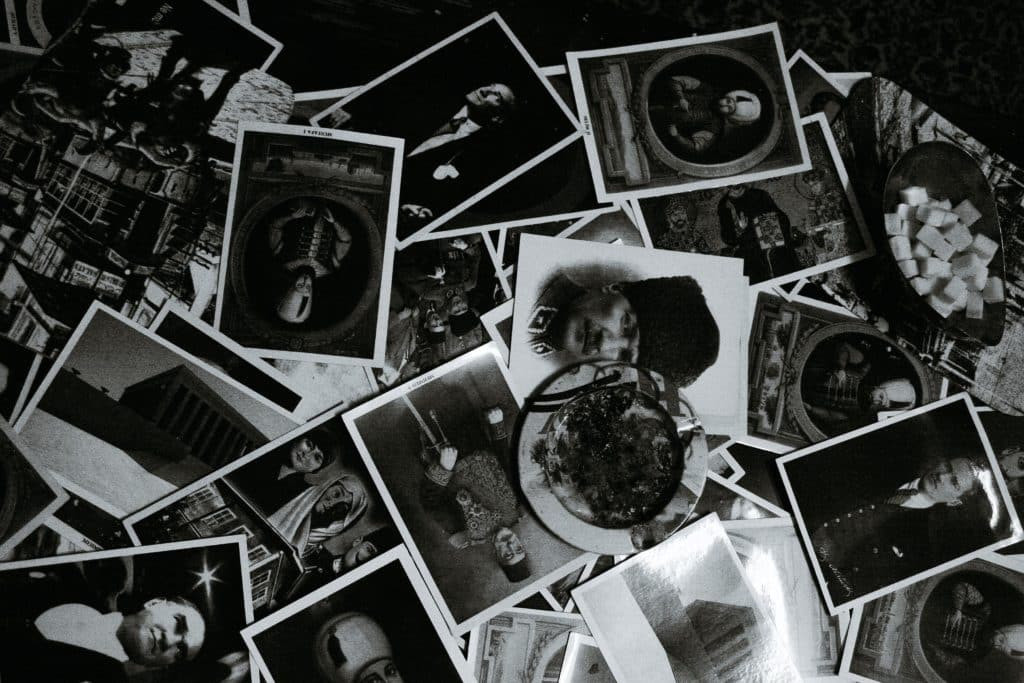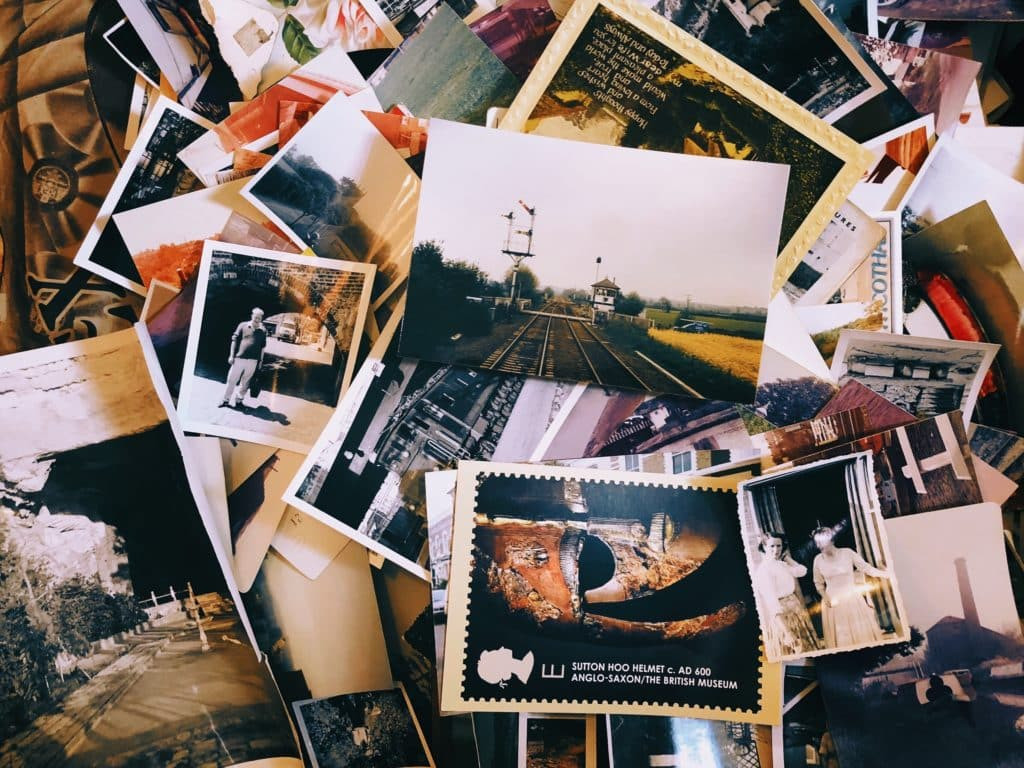Discovering a cherished photograph stuck fast to the glass of its frame can be disheartening. Attempts to simply peel or scrape it off often lead to further frustration, and potentially, damage. You might be left wondering, How Do You Remove A Photo Stuck To Glass without ruining it? This guide provides proven methods to safely detach your photos, along with techniques to prevent this issue in the future. We’ll cover everything from gentle heat to freezing temperatures, ensuring you have the knowledge to rescue your precious memories.
Why Do Photos Become Glued to Glass?
Before we delve into removal techniques, understanding why photos stick to glass in the first place can help you avoid this problem with other framed pictures. Several factors contribute to this common issue:
Aging Emulsion
Most photographic prints are coated with an emulsion layer to enhance glossiness and visual appeal. Over time, this emulsion can degrade and become sticky, especially in older photos. This deterioration is a primary reason why old photographs often adhere to picture frame glass.
Humid Environments
Humidity is a significant culprit in photo damage. Storing photos in damp environments like basements or attics allows moisture to seep into the photograph. This moisture can cause the photo to stick to the glass and can also lead to other forms of damage like mold or warping.
Sunlight Exposure
Direct sunlight, with its heat and intense light, can also cause photographs to stick to glass. The energy from sunlight can react with the chemicals in the photo print, making the surface adhesive and causing it to bond with the glass.
Static Electricity
While less frequent, static electricity can also play a role. Static charge on the glass surface can attract the photo, causing it to cling. This is more likely in dry environments and with certain types of photo paper and glass.
 Close up of a picture frame with a photo stuck to the glass, illustrating the problem of removing photos from glass frames
Close up of a picture frame with a photo stuck to the glass, illustrating the problem of removing photos from glass frames
Preventing Photos From Sticking to Glass: Proactive Steps
Prevention is always better than cure. Here are effective ways to prevent your photos from sticking to glass in the first place:
Utilize Photo Frames with Mats
Using photo frames with mats provides a crucial air pocket between the photograph and the glass. This physical separation prevents direct contact and reduces the chances of sticking. The mat acts as a buffer, minimizing the risk of the photo adhering to the glass surface.
Acid-Free Photo Corners
Employing photo corners made from acid-free materials is another excellent preventive measure. These specialized corners are designed to hold photos in place without adhesive that can react with the photo or glass. Acid-free materials prevent chemical reactions that can contribute to sticking over time.
Apply Photo-Mounting Spray
A photo-mounting spray can create a protective barrier between the photo and the glass. This spray forms a thin, non-stick layer that prevents direct adhesion. It’s a proactive way to ensure easy removal of the photo from the frame in the future.
By implementing these preventive strategies, you can significantly reduce the likelihood of your photos getting stuck to glass. However, if you’re already facing this issue, the following methods will guide you through safe removal techniques.
Before attempting any removal method, it’s crucial to create a digital backup of your photo. Damage can occur during the removal process, and having a digital copy ensures your memory is preserved. Here are a few options for scanning your photos:
Flatbed Scanner
A flatbed scanner is ideal for creating high-resolution digital copies. It’s a straightforward process: place the photo on the scanner bed and use the scanner software to create a digital file. This method ensures excellent image quality and detail.
Digital Camera
Using a digital camera to photograph your photo is a quick way to create a backup. Ensure good lighting and a stable setup to minimize blur and distortion. The quality depends on your camera’s resolution but is generally sufficient for backup purposes.
Smartphone Camera
Modern smartphones often have high-quality cameras that can capture detailed images. Use your smartphone to photograph the stuck photo in good light. This is a convenient and readily available option for creating a digital safeguard.
Once you have secured a digital copy, you can proceed with the methods to remove the photo from the glass frame.
Step-by-Step Guide: How to Remove a Photo Stuck to Glass
Here are four effective methods to safely remove a photo stuck to glass:
Method 1: Gentle Heat with a Hair Dryer
- Prepare: Set your hairdryer to the lowest heat setting.
- Apply Heat: Hold the hairdryer approximately 7 inches away from the glass surface.
- Warm Evenly: Apply warm air over the stuck photo for about five minutes. The gentle heat will help to soften the adhesive.
- Test and Gently Pull: Carefully try to lift a corner of the photo. If it loosens, slowly and gently peel the photo away from the glass.
- Caution: Avoid using high heat, as excessive heat can damage the photograph.
Method 2: The Freezer Technique
- Prepare: Place the entire photo frame in a freezer.
- Freeze: Leave it in the freezer for a few hours. The cold temperature will make the adhesive brittle.
- Remove and Handle: Take the frame out of the freezer. Wear rubber gloves to protect your hands and provide a better grip.
- Gentle Separation: Carefully try to peel the photo from the glass. The cold should make the adhesive less sticky and easier to separate.
- Safety First: Be cautious as glass can become brittle in extreme cold.
Method 3: Credit Card Separation
- Position Frame: Place the photo frame face down on a flat, stable surface.
- Insert Credit Card: Gently insert the edge of a credit card (or similar flexible plastic card) between the photo and the glass, starting at a corner.
- Carefully Slide: Slide the credit card slowly and carefully, working it between the photo and glass to cut through the adhesive.
- Peel Away: Once you’ve worked the card around the edges, gently peel the photo away from the glass.
- Avoid Force: Do not force the card or photo, as this can cause tears or creases.
Method 4: Warm Water Soak
- Prepare Warm Water: Fill a bowl with warm water (not hot).
- Submerge Frame: Completely submerge the photo and glass in the warm water.
- Soak Time: Allow it to soak for a while. The warm water will penetrate and loosen the adhesive.
- Separate Gently: After soaking, try to gently separate the photo from the glass while still submerged.
- Dry Carefully: Once separated, lay both the photo and glass on paper towels to air dry completely. This can take about an hour.
 Hands gently peeling a photo from glass after using a removal method, showing the successful separation of photo and glass
Hands gently peeling a photo from glass after using a removal method, showing the successful separation of photo and glass
Methods to Avoid: How NOT to Remove a Stuck Photo
While trying to unstick your photo, it’s crucial to avoid methods that can cause irreversible damage:
- Avoid Boiling Water: Never use boiling water. Excessive heat can severely damage the photo emulsion, causing warping, discoloration, and melting.
- Avoid Razor Blades or Sharp Objects: Do not attempt to scrape the photo off with a razor blade or other sharp objects. These tools are likely to tear or scratch the photo surface, causing significant damage.
- When in Doubt, Seek Professional Help: If you are hesitant or the photo is particularly valuable or fragile, consider taking it to a professional photo lab or restoration service. They have specialized tools and expertise to handle delicate photos safely.
Potential Damage to Photographs
It’s important to acknowledge that removing a photo stuck to glass carries some risk of damage, regardless of the method used.
- Moisture Damage: Methods involving water, even warm water, can lead to warping or discoloration of the image. The print may soften, making it susceptible to tears.
- Physical Tears: Using a credit card or peeling with your hands can result in layers of the photo print separating or tearing, especially if the adhesive is very strong.
Fixing Damage from Stuck Photographs: Photo Restoration
If your photo sustains damage during the removal process, professional photo restoration services can often help. Services like MemoryCherish specialize in bringing damaged photos back to life.
Photo restoration experts can address various types of damage, including:
- Removing Stains and Mold: Cleaning and correcting discoloration and blemishes caused by moisture or age.
- Repairing Tears and Creases: Digitally mending rips, tears, and creases to restore the image’s integrity.
- Enhancing Detail and Color: Sharpening blurred images, refining details, and restoring faded colors to their original vibrancy.
If your photo has been damaged, consider professional restoration to recover your precious memory.
How Photo Restoration Works
Professional photo restoration typically involves:
- Detailed Examination: Restoration artists carefully assess the damage to the photo.
- Digital Restoration: Using specialized software, they digitally repair and enhance the image, addressing specific damage types.
- Quality Check: The restored image undergoes rigorous quality checks to ensure the best possible result.
- Digital and Print Delivery: You receive a digital copy of the restored photo, and print options are often available.
Getting Started with Photo Restoration
To restore your damaged photo:
- Clean the Photo: Gently clean any loose debris from the photo surface, as guided by resources on cleaning old photos.
- Scan the Photo: Create a high-resolution scan of your photo using a scanner or high-quality photo of the picture.
- Upload and Order: Upload the scanned image to a photo restoration service’s website and select your desired restoration options.
Need More Information?
For any further questions or assistance, customer support for photo restoration services is typically available via email.
In Conclusion
Removing a photo stuck to glass requires patience and care. By understanding the causes and following these safe removal methods, you can maximize your chances of successfully rescuing your photograph. Remember to always back up your photos digitally beforehand, and if damage occurs, photo restoration services are available to help you preserve your cherished memories.
